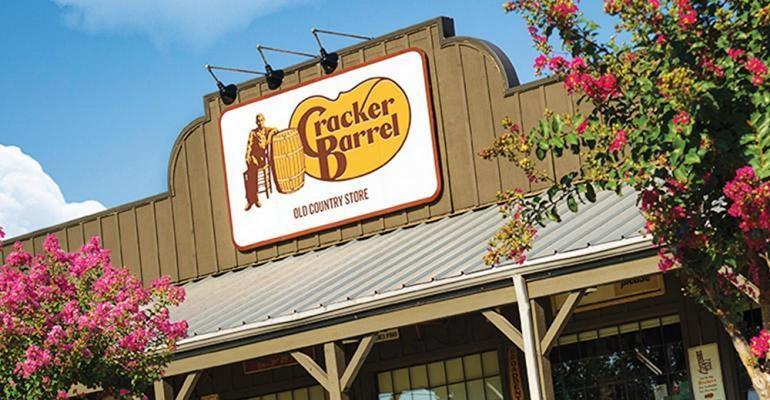Cracker Barrel Old Country Store Inc. plans to raise menu prices about 6% for the latter half of the fiscal year to help offset ongoing commodity and wage inflation, the company said Tuesday.
The Lebanon, Tenn.-based casual dining chain raised menu prices roughly 5.3% during the Jan. 28-ended second quarter, which reflected more than 2% in pricing from fiscal 2021 and more than 3% from a price increase in August. The increases helped offset the impact of 8.5% commodity inflation and a 10.8% increase in hourly wage inflation during the quarter.
Given Cracker Barrel’s positioning as an “everyday value” brand, the chain has been employing multiple “small surgical” price increases to monitor guest reaction. But Craig Pommells, Cracker Barrel’s chief financial officer, expressed confidence that the chain has room to raise prices even more.
“We are comfortable with the elevated pricing in this current environment and continue to see minimal impact to traffic and mix from our pricing actions,” he said during the company’s second-quarter earnings call.
The company projected commodity inflation will peak during the third quarter at about 15%, with hourly wage inflation in the 11% to 12% range, Pommells said.
But Cracker Barrel is optimistic that sales and traffic trends will continue to recover, post Omicron, and that restaurants will benefit from a more-normal summer travel season in 2022 — though higher gas prices could also put a damper on guest spending power.
Cracker Barrel grew revenues 6.2% above 2019 pre-COVID levels to $862.3 million during the second quarter. Same-store sales were up 25.9% from a year ago, and increased 1.9% over the second quarter of 2019. Net income for the quarter was $37.6 million, or $1.60 per share, compared with $14 million, or 59 cents per share, a year ago.
The chain was having a strong holiday season in November and December until Omicron put a damper on guest traffic, said Sandy Cochran, Cracker Barrel’s president and CEO.
“Prior to the emergence of Omicron in late December, our comparable restaurant sales versus 2019 were running in the mid-single digits, and our comparable retail sales were running in the mid-to-high teens. Once Omicron hit, we saw traffic declines in late December through January, as guests became more cautious about dining indoors and staff called out at historically high levels, which limited our capacity in certain locations,” she said.
Weather events also slowed guest counts, but Cochran said COVID cases are receding, and she is confident the restaurants have the needed staffing to meet the anticipated traffic recovery in the third quarter. Only roughly 10 of the chain’s 660 units are “critically understaffed,” she said.
Cochran said the labor pinch is improving.
Cracker Barrel is seeing the flow of job applicants increase, “which has been encouraging. So we’re able to be more selective in our hiring decisions,” she said. “The workforce, sort of does appear to be returning back to the job market, though I suspect the restaurant industry is going to be more challenged in comparison to other sectors.”
Contact Lisa Jennings at [email protected]
Follow her on Twitter: @livetodineout





